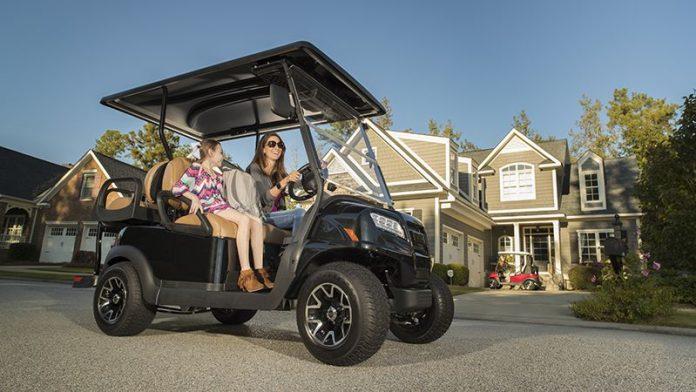Many golf cart owners had solenoid problems and delay as a result of them. To examine and repair a golf cart, you must first know what a solenoid is.
The solenoid is the small unit that rides on top of the starter in the engine. The solenoid brings power from the battery to the rest of your golf cart. With the use of an electric charge, a solenoid may generate a magnetic field. In this article, you will learn everything about the golf cart solenoid and why condition worsens.
What Happens To Your Golf Cart When The Solenoid Goes Bad?
The large contacts in a gas golf cart may refuse to release, causing the starter to run even after turning off the ignition. Furthermore, the springs that pull the gear back to its resting state may start to break down, making the starters remain disengaged all of the time. (Starters are designed to get the engine running, then disconnect.)
The solenoid, like any equipment that depends on wiring, might simply wear out from overheating. The most common side effect on a gas golf cart is the starter failing to connect, resulting in the engine not turning over and a succession of useless tapping sounds.
If your golf cart fails to turn on when you turn the key on, this is the most obvious sign of solenoid failure. The solenoid clicks a little with the ignition system in regular operation; in most cases, a failing solenoid will not snap. There could be three things going on here: faulty interconnections, weak batteries, or the coil wearing out.

How Do You Test A Golf Cart Solenoid?
The following steps will tell you how you can test a golf cart solenoid.
- You’ll need a voltmeter/multimeter, as well as a 1/2″ wrench.
- Disconnect any wires that may be connected to the large terminals. Cover the cable terminals in tape and keep them apart from one another.
- Set your multimeter to ohms and insert a probe on each large terminal with the key off and the cart direction switch in the neutral position.
- Press on the accelerator with the cart’s movement control in the forward position, and the key is turned on. A click should be heard first from the solenoid.
- Once you hear this click, set your multimeter to ohms and put a probe on every large terminal terminal using your multimeter. A measurement of 0 to 0.4 ohms should be obtained. If you get a reading higher than this, you need to replace your solenoid.
- If your solenoid does not click, take out your multimeter, set it to DC volts on the 200 scale, and then attach a probe on each of the smaller terminals.
- Press on the accelerator while the key is turned on and the cart is in forward.
- The solenoid needs to be replaced IF the voltmeter shows a full battery voltage without a click.
- If your voltmeter stays at 0, the problem stems from somewhere else in your cart.
Can You Replace The Solenoid On A Golf Cart?
Changing the solenoid on your golf cart is normally easy, but you need a few types of equipment and a basic understanding of how the system operates. The ignition circuit connects to the solenoid, in the engine bay. When turning the key, the solenoid acts as a switch, energizing the ignition coil and igniting the fuel-air mixture. The solenoid could be the cause of your golf cart’s inability to start or run.
Golf carts are used for a number of purposes, the most common of which is getting around a golf resort. Carts frequently navigate the course or go from one location to another within the resort. Because the cart moves around so frequently, it is prone to malfunctions – such as a faulty solenoid. A solenoid replacement is a straightforward repair that most people complete in under an hour.
For many people, golf carts are an excellent tool. They provide a little more pleasure to your day while also assisting you in getting around the golf course easier. They do, however, require maintenance, just like any other vehicle. It’s a good idea to check the fluids and make sure everything works properly if your golf cart isn’t running as smoothly as it should or is giving you difficulties. The solenoid is one of the most crucial components of a golf cart.

How Often Does A Golf Cart Solenoid Go Bad?
Your solenoid is prone to overheating as a result of its regular use. As a result, you may notice irregular operation after a while — it may work one time, but not the next. Loose cables or dusty interiors could cause your cart’s inability to start.
Like many other things, a golf cart solenoid requires maintenance to avoid problems affecting its functionality and preventing malfunctions that can ruin your productivity and fun on the cart. J’s Golf Carts offers service packages where you can routinely bring in your cart to prevent any issues with it.
Your solenoid becomes slightly dormant during operation, reducing the amount of time your golf cart battery is used. This is because the voltage is carried through it via its components, the steel pushbutton, and a thin cable, enabling energy to travel from the batteries to the motor in a linear motion. It will stop working when the power or voltage level is insufficient to trigger the solenoid. Solenoids require a specific voltage to work correctly. They will not function if they do not receive the proper voltage.
J’s Golf Carts in Holly Springs, NC
This article has covered all you need to learn about golf cart solenoids, including the signs to watch for. If you suspect your golf cart has a damaged solenoid and would like to bring it to a professional, J’s Golf Carts can help you figure out what exactly is going on. Feel free to contact us today about bringing your cart in for servicing – we also have parts and accessories in stock if you need something else. We will get back to you within 24 hours. We look forward to hearing from you soon!

 Chanel earrings, CC earrings adorned with stones v42
Chanel earrings, CC earrings adorned with stones v42 